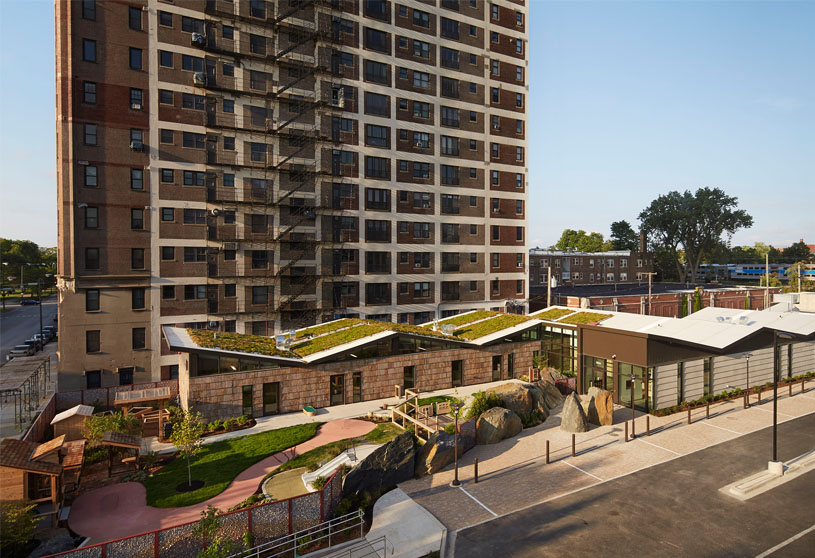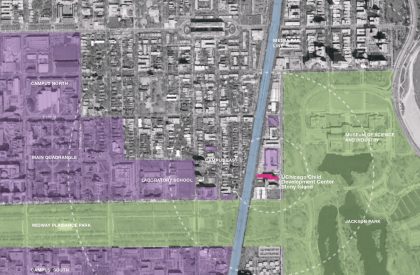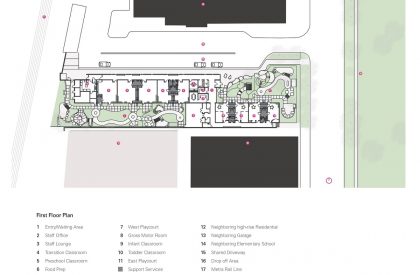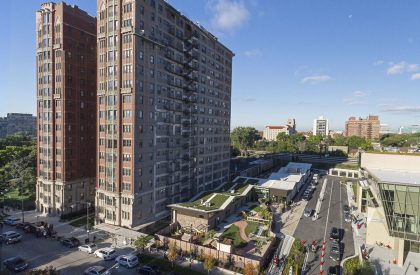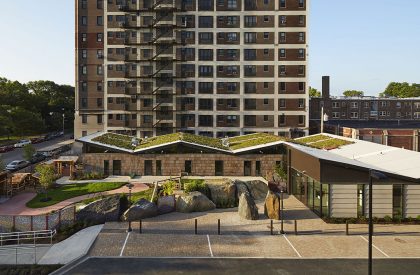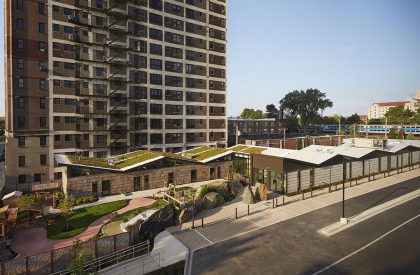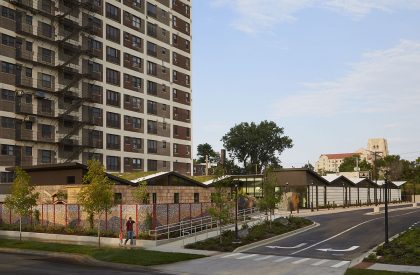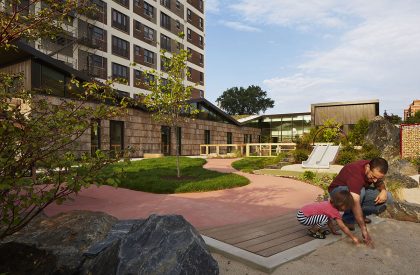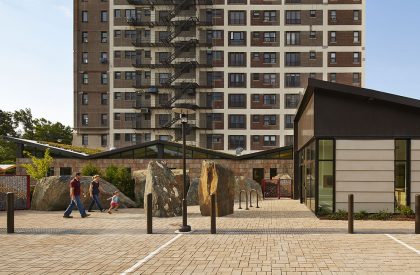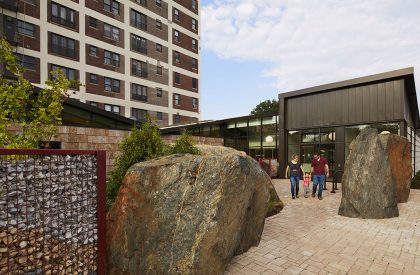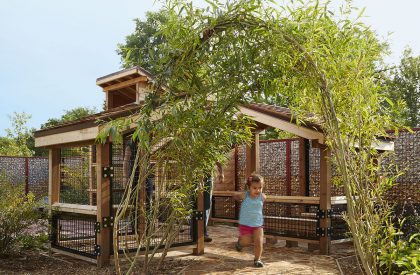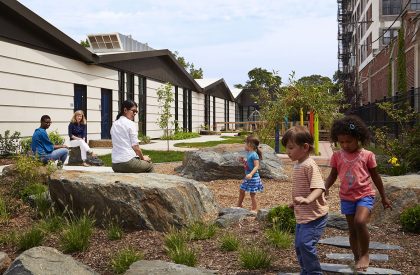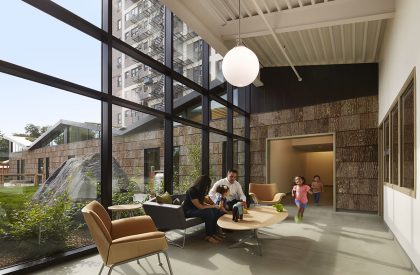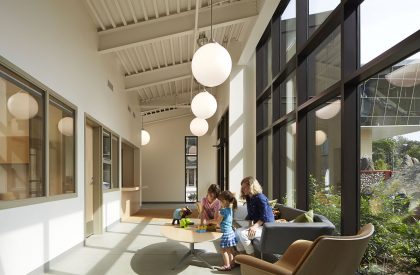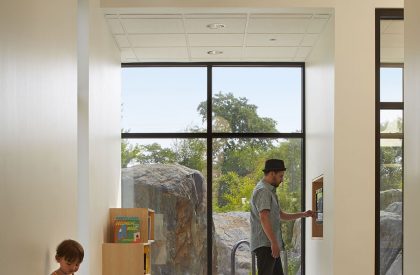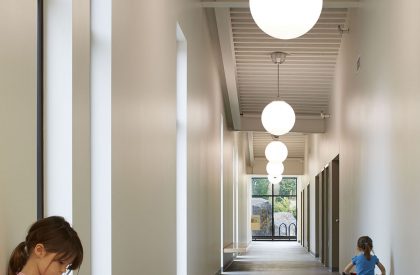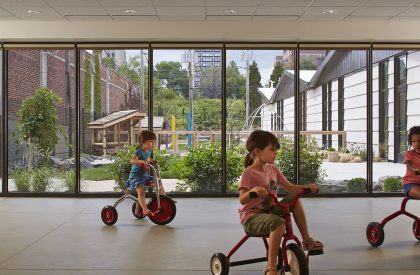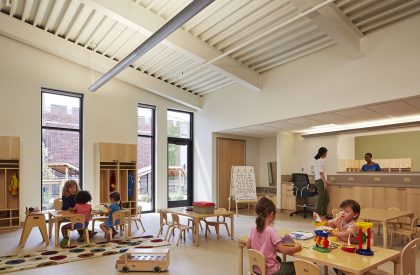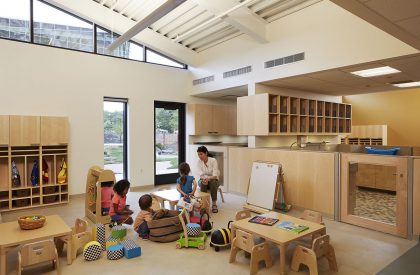Excerpt: UChicago Child Development Center, designed by Wheeler Kearns Architects, integrates the natural environment with its architecture and child-centered curriculum. It blurs distinction between nature, play, and wonder, inviting the public to consider that nature, not just tall buildings, can be exuberant, too, in an urban setting. This project insists that nature, play, and learning should be seamless during all four seasons.
Project Description
[Text as submitted by architect] Inspired by an adjacent historic landscape, the facility integrates the natural environment with its architecture and child-centered curriculum. The building, with a z-shaped footprint, responds to the narrow infi ll site, optimizing limited sun exposure and leveraging visual connections between the interior and exterior.
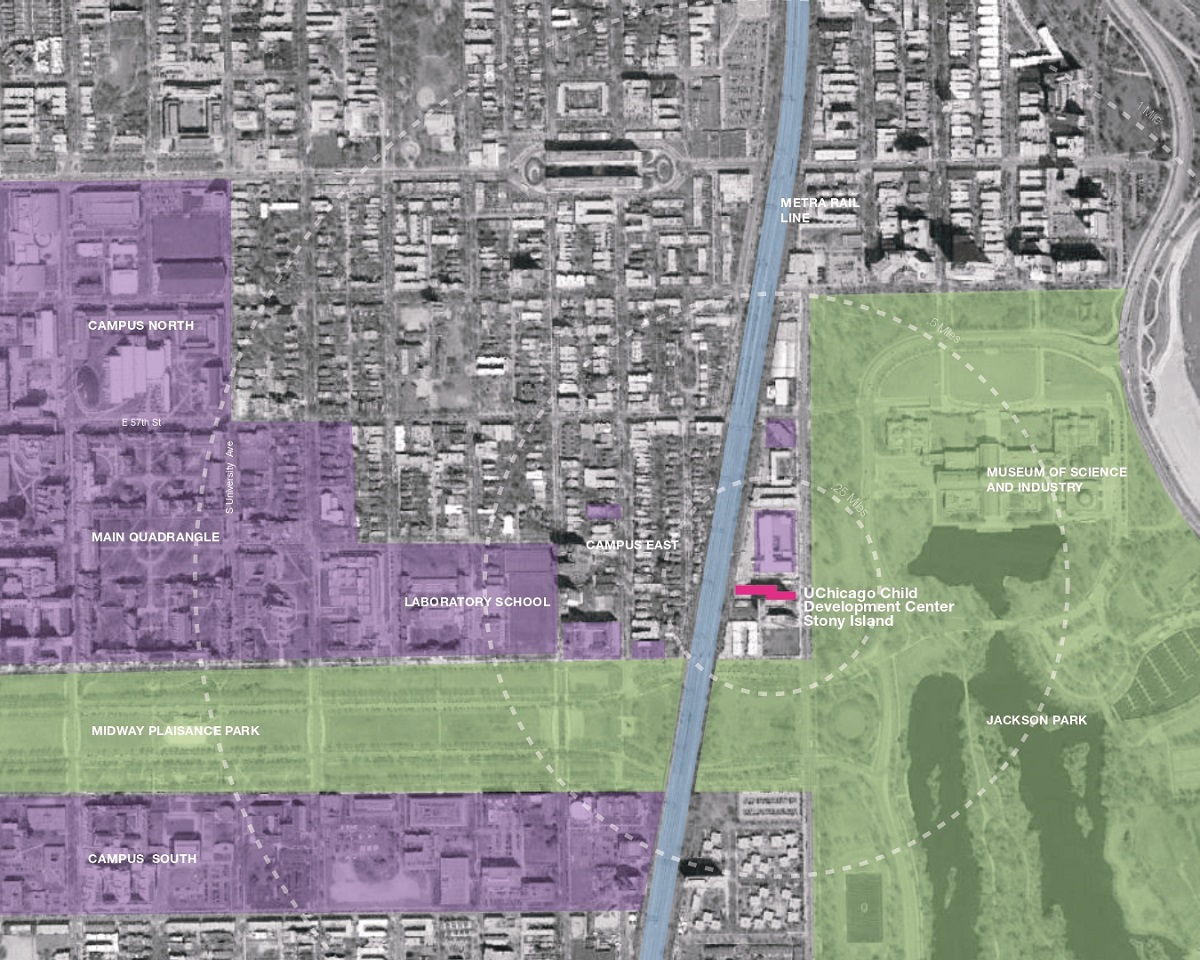
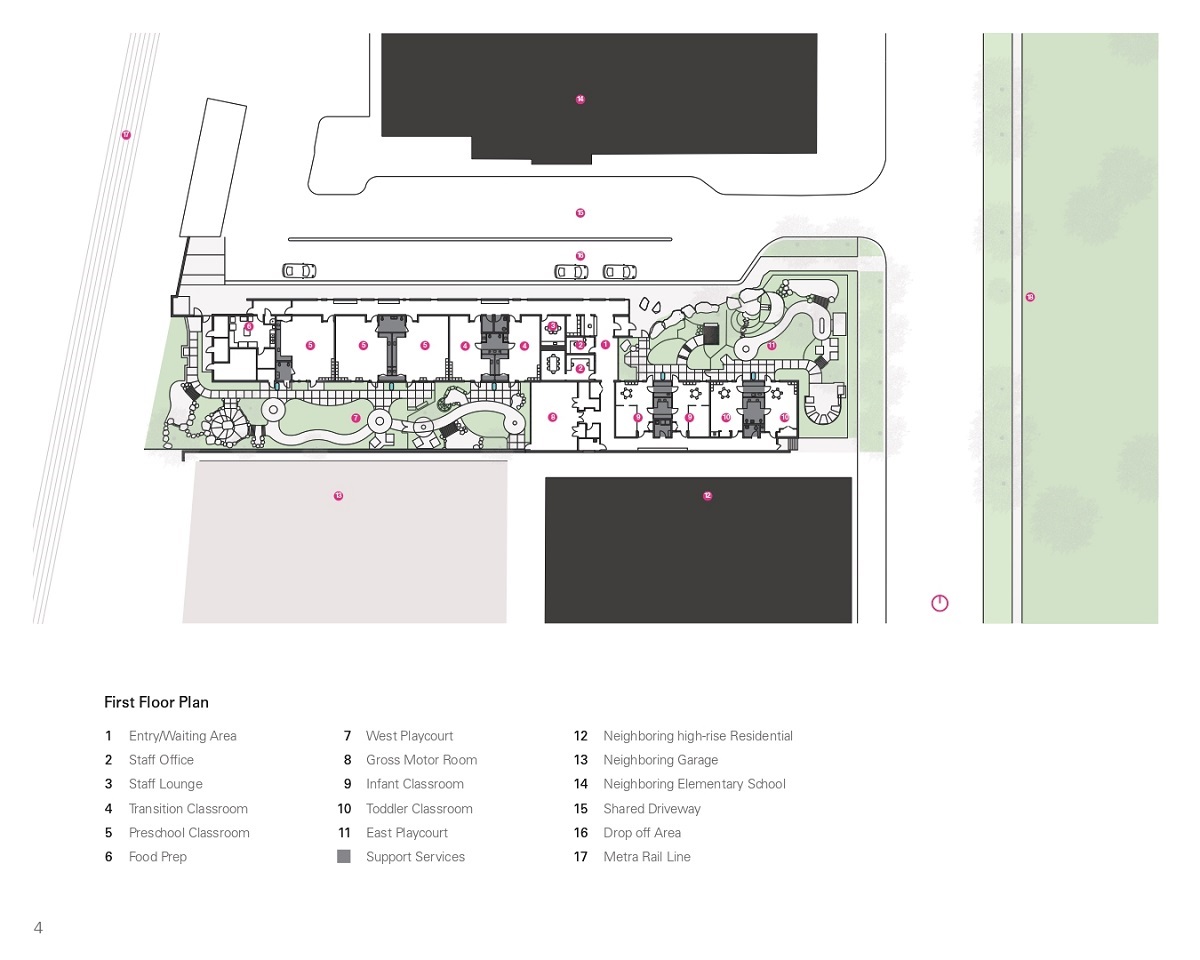
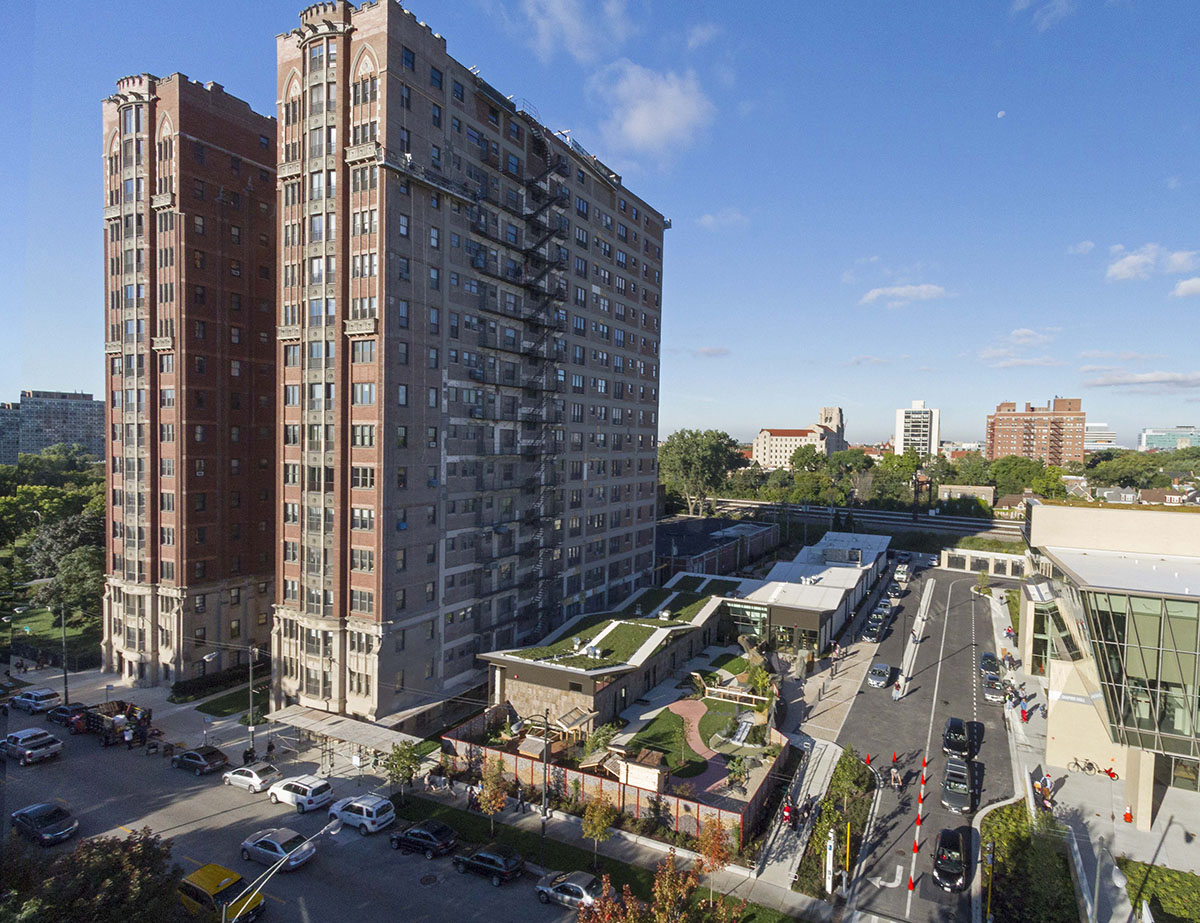
The design places the emphasis on the ground plane, as experienced from a child’s perspective. While the building protects the security and privacy of its students, it subverts the idea of a fortress. It blurs distinction between nature, play, and wonder, inviting the public to consider that nature, not just tall buildings, can be exuberant, too, in an urban setting.
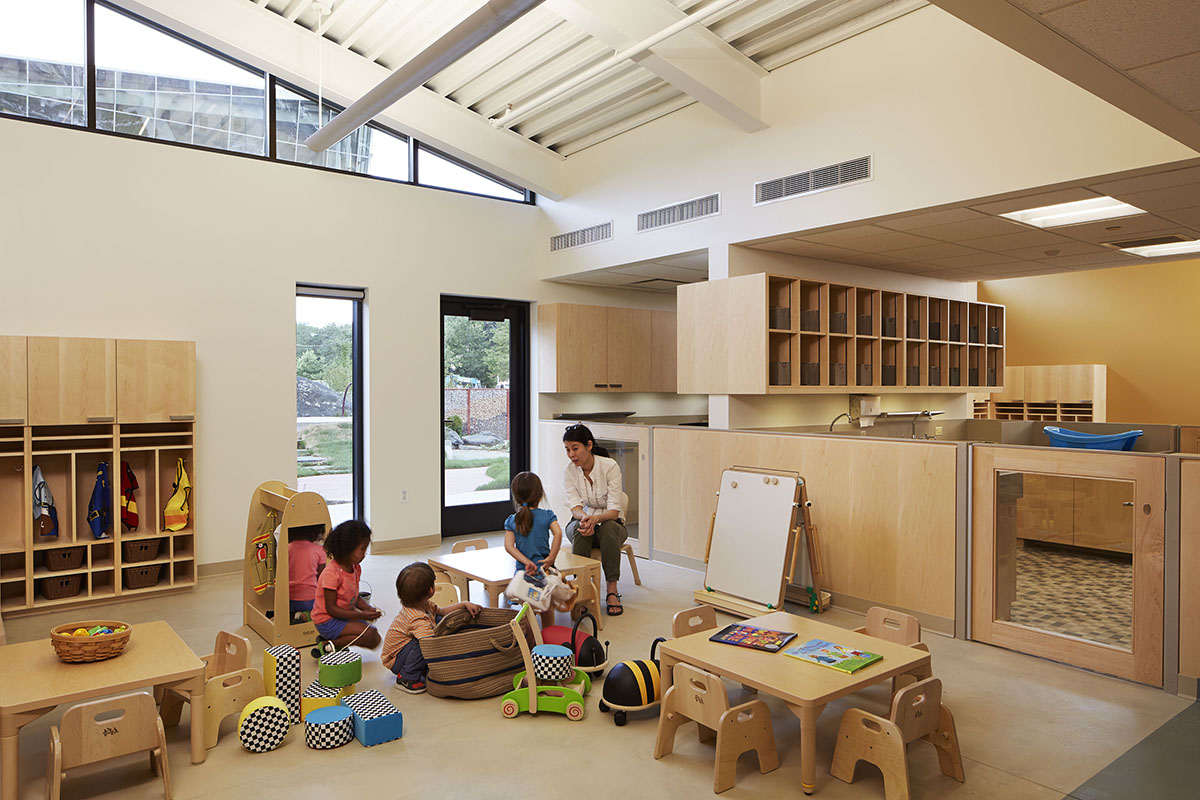
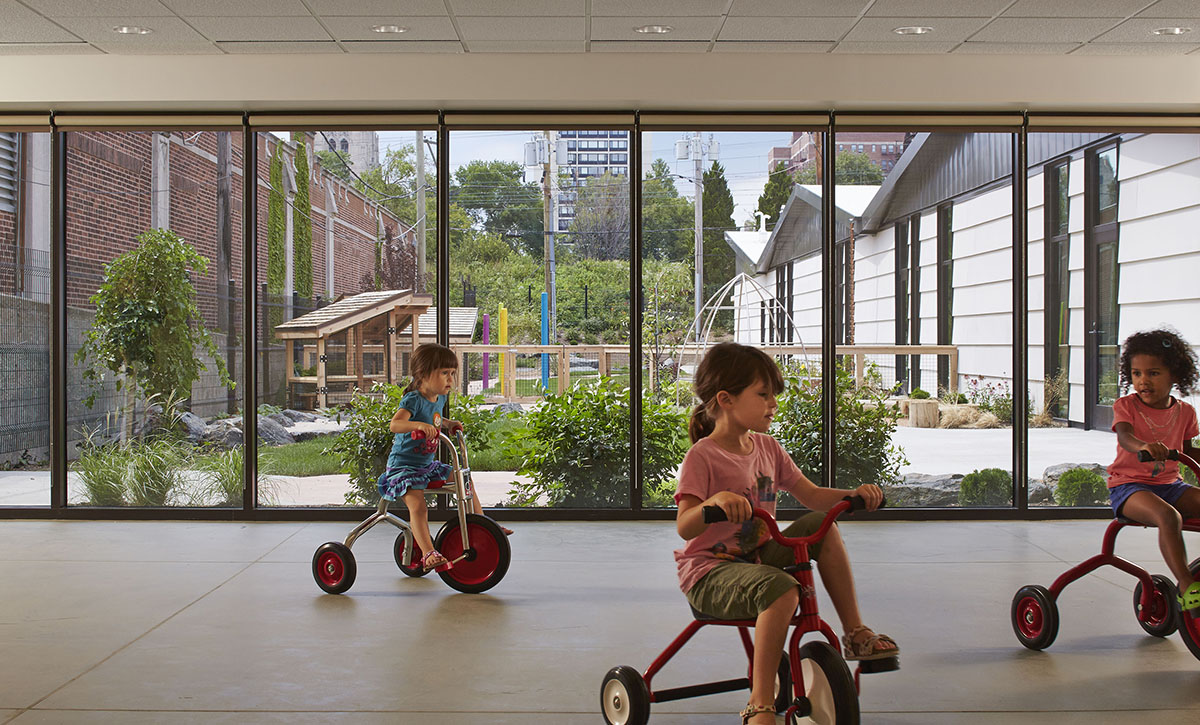
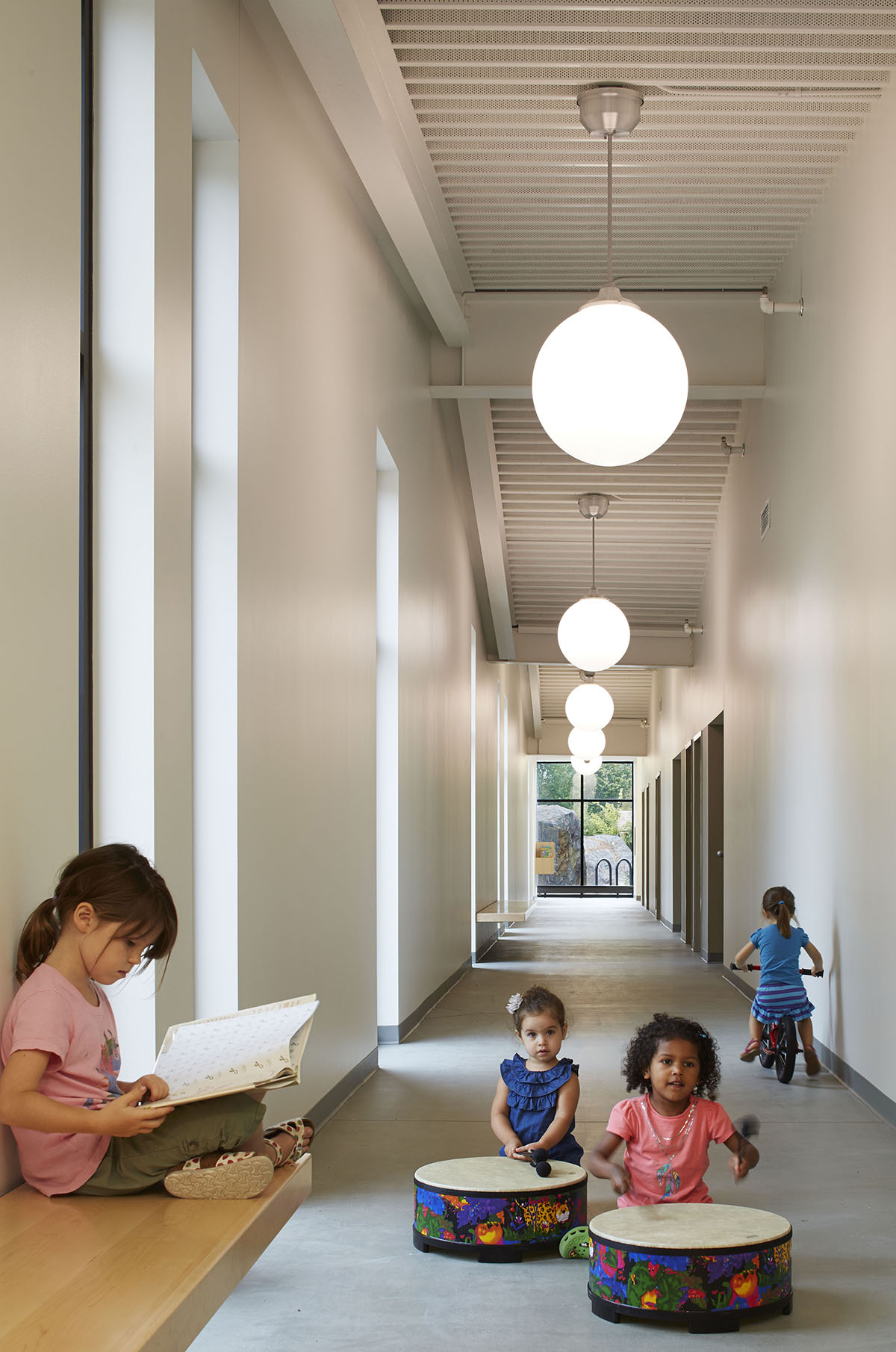
Instead of creating a place dominated by synthetic play equipment and primary colors, the design allows children to be immersed in the natural world to discover fi rst principles first-hand. A rich ensemble of minimally processed natural materials engages the public along the sidewalk. Vines climb a gabion fence, fi lled with three different Midwestern stones in waving layers. Huge boulders, extracted from glacial till, march toward the central entry. Tree bark siding slides below a visible green roof, which folds it way over the eastern wing.
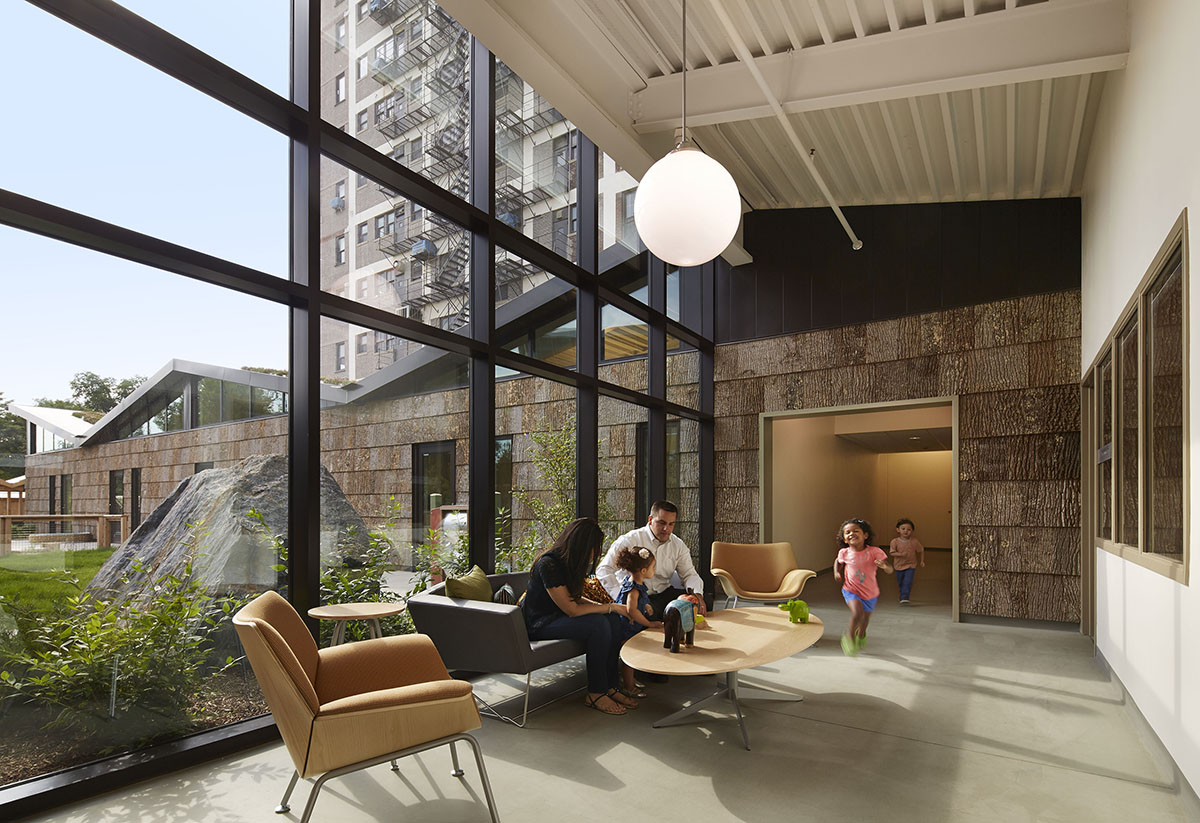
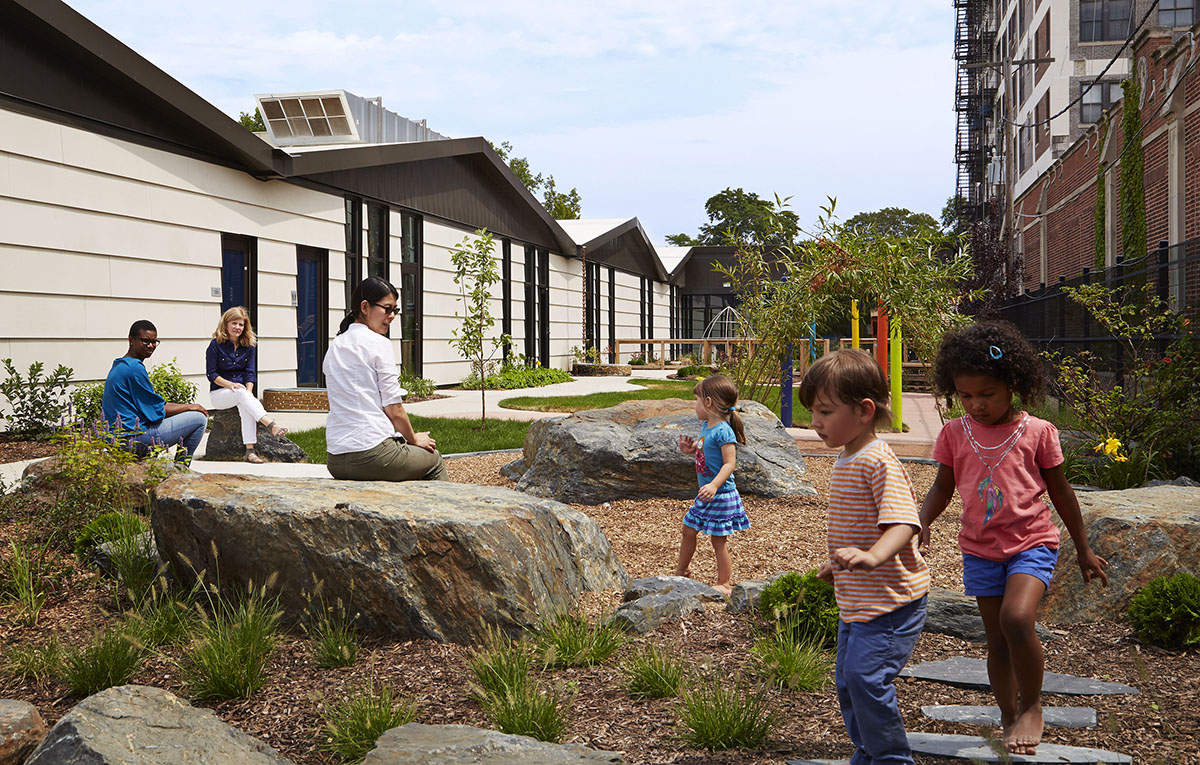
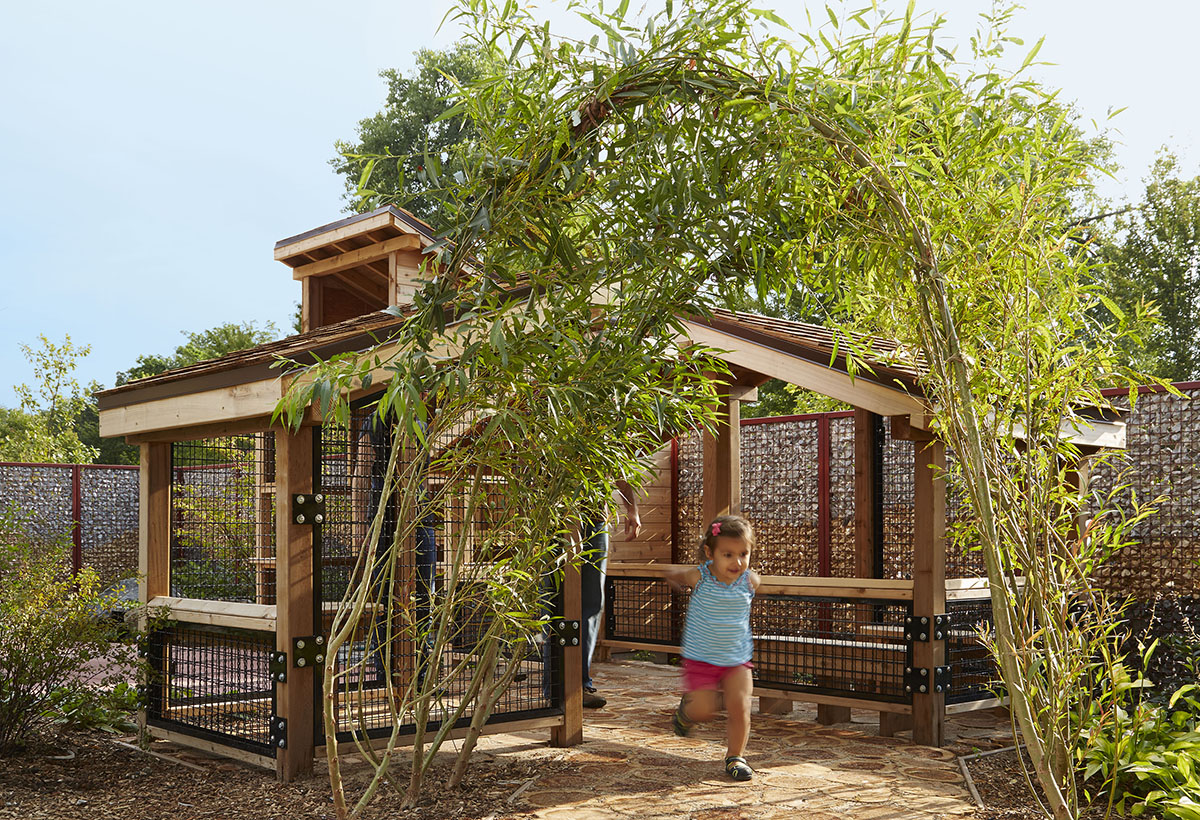
If children learn what they live, they will not only learn from nature here, but they will learn to value it. This project insists that nature, play, and learning should be seamless during all four seasons.
